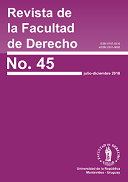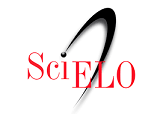Contribuição para a ensenhanza do Direito Probatório:
método colaborativo induzido pelo diálogo socrático
Resumo
O método socrático ainda é válido - e a pesquisa mais recente mostra isso - desde que seja complementar a outras metodologias. Neste caso, é o aprendizado colaborativo empiricamente aplicado com sucesso em ensinar com metodologias ativas de direito probatório na graduação. Com o uso combinado do diálogo socrático e estratégias colaborativas, a distração do aluno é aproveitada para valorizá-lo e fazê-lo participar de seu grupo e na classe. Na aprendizagem colaborativa, a orientação (não a imposição) provém do aluno e dos colegas, a professora não dá a resposta, mas orienta-se para ela e essa é a vantagem que concede aos socráticos ou induzidos a aprender pares. O método socrático na estrutura colaborativa foi redescoberto e mostra eficácia. Especialmente no ensino do direito, as discussões em torno dele são muito valiosas e a discussão sobre sua aplicação como metodologia exclusiva ainda é válida. Este é um contributo para diversificar os métodos de ensino da Lei que não se limita apenas à lei, ao seu conhecimento e à sua aplicação, excede-a e inclui aspectos do aluno que podem ser melhor incentivados e explorados.
Downloads
Referências
Anderson, L. W., Krathwohl, D. R., Airasian, P. W., Cruikshank, K. A., Mayer, R. E., Pintrich, P. R., Raths, J. y Wittrock, M. C. (2001). A taxonomy for learning, teaching, and assessing: A revision of Bloom’s Taxonomy of Educational Objectives. New York: Longman.
Ayers, P. (2006). Using subjective measures to detect variations of intrinsic cognitive load within problems. Learning and Instruction, 16(5), 389-400.
Bartimote-Aufflick, K., A., B. y Ainle, M. (2006). University Teachers Engaged in Critical Self-Regulation: How May They Influence Their Students? En A. Efklides y P. Misailidi, Trends and Prospects in Metacognition Research (pp. 427-444). London: Springer.
Beryl, B. (1992). Teaching Evidence: Storytelling in the Classroom. The American University Law Review, 41, 453.
Berrett. D. (2012). How ‘flipping’ the classroom can improve the traditional lecture. The Chronicle of Higher Education, 12, 1-14
Carnelutti, F. (1982). La Prueba Civil. Buenos Aires: EJEA.
Cobas Cobiella, M. E. (2015). El aprendizaje cooperativo: una competencia imprescindible para la formación de juristas. Revista Boliviana de Derecho, 18, 604-621.
Cobas Cobiella, M. M. y Mirrow, M. (2014). Educación legal en los Estados Unidos. Facultades de Derecho y el Juris Doctor. Inter-American Law Review , 46(1), 7-31.
Coloma Correa, R. (2005). El ocaso del profesor Binns: Un ensayo acerca de la enseñanza del derecho en Chile. Ius et Praxis, 11(1), 133-172.
Couture, E. (1977). Fundamentos del Derecho Procesal Civil. Buenos Aires: Depalma.
Fiss, O. (1999). El derecho según Yale. En M. Böhmer, La enseñanza del Derecho y el ejercicio de la abogacía (págs. 26-35). Barcelona: Gedisa.
Fadul, J. A. (2009). Collective Learning: Applying distributed cognition for collective intelligence. The International Journal of Learning. 16 (4), 211–220.
Fernández March, A. y Bolonia, T. (2006). Metodologías activas para la formación de competencias. México, D.F.: Educación Siglo XXI.
Fredrick E. (2010). Toward a General Theory of Standards of Proof, 60 Cath. U. L. Rev. (2010), 1.
Gokhale, A. A. (1995). Collaborative learning enhances critical thinking. Journal of Technology Education, 7(1), 22-30.
Hammill, J., Best, G. y Anderson, J. (2015). Developing Student Mentor self-regulation skills through formative feedback: Rubric development phase. Journal of Peer Learning, 8, 48-58.
Heer, R. (2012). Iowa State University Center for Excellence in Learning and Teaching Updated. Recuperado de http://www.celt.iastate.edu/teaching/effective-teaching-practices/revised-blooms-taxonomy(revisado 25/8/2016).
Hess, Gerald F. (2013). Blended Courses in Law School: The Best of Online and Face-to- Face Learning? McGeorge Law Review, 45, 51-67
Hess, G., Friedland, S., Schwartz, M. y Sparrow, S. (2011). Techniques for Teaching Law 2. North Carolina: Carolina Academic Press.
Hopkins, A. (2008). Teaching Evidence Law Within the Framework of a Trial: Relating Theory to Practice as Students Take to Their Feet and Take Responsibility for the Trial Narrative. Journal of the Australian Law Teachers Association, 173-184.
Iborra Cuéllar, A. y Izquierdo Alonso, M. (2010). ¿Cómo afrontar la evaluación del aprendizaje colaborativo? Una propuesta valorando el proceso, el contenido y el producto de la actividad grupal.Revista General de Información y Documentación, 20, 221-241.
Kaori, Y. y Hidetoshi, Y. (2017). Project-based learning in out-of-class activities: flipped learning based on communities created in real and virtual spaces. Procedia Coputer Service, 112, 1044-1053.
Kennedy, D. (1987). The Responsibility of Lawyers for the Justice of Their Causes. Texas Tech Law Review, 18, 1157-1163.
Kennedy, D. (1982). Legal Education and the Reproduction of Hierarchy. Journal of Legal Education. 591-615.
Lobato, C. (1997). Hacia una comprensión del aprendizaje cooperativo. Revista de Psicodidáctica, 4, 59-76.
Kolb, D. A. (1976). The Learning Style Inventory: Technical Manual, Boston, Ma.: McBer.
Kolb, A. Y., y Kolb, D. A. (2005). The Kolb Learning Style Inventory – Version 3.1: 2005 Technical Specifications. Haygroup: Experience New York: Based Learning Systems Inc.
Lage, M. J., Platt, G. J. y Treglia, M. (2000). Inverting the classroom: A gateway to creating aninclusive learning environment. The Journal of Economic Education, 31(1), 30–43.
Lam, D. (2004). Problem-based learning: an integration of theory and field. Journal of Social Work Education, 40, 371, 372.
Leclerc, O. (2012). La distinction entre ’la preuve en droit’ et la ’preuve en science’ est-elle pertinente? E. Truilhé-Marengo. Preuve scienti que, preuve juridique. Paris: Larcier.
Lemmer, C. (2013). A view from the Flip Side: Using the “Inverted Classroom” to Enhance the Legal Information Literacy of the International LL.M. Student. Law Library Review, 2, 461-491.
Mayer, R. E. (2009). Learning and Instruction. Upper Saddle River, NJ.: Pearson/ Merrill/ Prentice Hall.
Mazur, E. (1996). Peer Instruction: A User’s Manual. Boston, MA: Addison Wesley.
Mazur, E. (2006). Peer Instruction: Wie man es schafft, Studenten zum Nachdenken zu bringen. Praxis der Naturwissenschaften. Physik in der Schule, 55(4), 11-15.
Miller, K., Schell, J., Ho, A., Lukoff, B. y Mazur, E. (2015). Response switching and self efficacy inPeer Instruction classrooms. Physical Review Special Topics - Physics Education Research, 11(1),1–8.
Nicol, D. J. y Boyle, J. T. (2003). Peer instruction versus class- wide discussion in large classes: A comparison of two interaction methods in the wired classroom. Studies Higher Education, 28, 457-473.
Nance, D. (2016). The Burden of Proof. Cambridge: Cambridge U. Press.
Oh, R. y Reamy, B. (2014). The Socratic Method and Pimping: Optimizing the Use of Stress and Fear in Instruction. American Medical Association Journal of Ethics, 16(3), 182-186.
Orejundo-Hernández, S., Fernández-Turrado, T. y Garrido-Laporte, M. A. (2008). Experiencias con metodologías activas en la formación del profesorado. Revista Interuniversitaria de Formación del Profesorado, 63(22), 21-45.
Palincsar, A. S. (1998). Social constructivist perspectives on teaching and learning. Annual Reviewof Psychology, 49, 345-373.
Prince, M. (2004). Does active learning work? A review of the research. Journal of Engineering Education, 93(3), 223–231.
Pantoja Ospina, M. A. (2013). Learning Styles Models : An upgrade for their revision and analysis. Revista Colombiana de Educación, (64), 79–105.
Posner, R. A. (2001). Clinical and Theoretical Approaches to the Teaching of Evidence and Trial Advocacy. Chicago: University of Chicago Law School
Prütting, H. (2016). Münchener Kommentar zur ZPO. Múnich: Beck.
Ramy, H. (2013). Moving Students from Hearing and Forgetting to Doing and Understanding: A Manual for Assessment in Law School. Capital University Law Review, 41, 837-850.
Roberts, P. (2002). Rethinking the Law of Evidence: A Twenty-First Century Agenda for Teaching and Research. Current Legal Problems, 55(1), 1.
Rothstein, P. (2006). Teaching Evidence. Georgetown: Georgetown University Law Center.
Ryan, E., Shuai, X., Ye, Y. y Ran, Y. (2014). When Socrates meets Confucius: teaching creative and critical thinking across cultures through multilevel Socratic method. Nebraska Law Review, 92(2), 290-349.
Santiveri Morata, F., Iglesias Rodríguez, C., Gil Iranzo, R. y Rourera Jordana, R. (2011). Metodologías activas en la docencia universitaria: resultados de algunas experiencias realizadas. IX Jornades de xarxes d’investigació en docència universitària Recuperado de http://dialnet.unirioja.es/servlet/articulo?codigo=4127817
Sentis Melendo, S. (1979). La Prueba. Buenos Aires: EJEA.
Schatzberg, L. (1999). Applying Bloom’s and Kolb’s Theories To Teaching Systems Analysys and Design. Recuperado de https://www.researchgate.net/publication/241724614_Applying_Bloom's_and_Kolb's_Theories_To_Teaching_Systems_Analysis_Design
Strayer, J. F. (2012). How learning in an inverted classroom influences cooperation, innovation and task orientation. Learning Environments Research, 15(2), 171-180.
Taruffo, M. (2003). Rethinking the Standard of Proof. American Journal of Comparative Law, 51, 659-677.
Taruffo, M. (2010). Evidence, in International Encyclopedia of Comparative Law, Vol. XVI, Cap. 7, Berlin: Mohr Siebeck, Tübingen.
Thalluri, J., O ’Flaherty, J. A. y Shepherd, P. L. (2014). Classmate peer-coaching: “A Study BuddySupport scheme”. Journal of Peer Learning, 7(7), 92–104.
Turull, M. (Ed). (2011). Experiencias de mejora e innovación docente en el ámbito del Derecho. Barcelona: Universidad de Barcelona.
Thies, D. (2010). Rethinking Legal Education in Hard Times: The Recession, Practical Legal Education and the New Job Market. Journal of Legal Education, 59, 598-630.
Vickrey, T., Rosploch, K., Rahmanian, R., Pilarz, M. y Stains, M. (2015). Research- Based Implementation of Peer Instruction: A Literature Review. Life Sciences Education, 2, 14-19.
Wolff, L.-C. y Chan, J. (2016). Flipped Classrooms for Legal Education. New York: Springer.
Revista de la Facultad de Derecho. Creative Commons Reconocimiento 4.0 Internacional License.










